Annual Report to NC-140
Maryland Agricultural Experiment Station
November 13-14, 2019 –Geneva, NY
Chris Walsh (Leader) Carol Allen, Bryan Butler, Michael Newell, Douglas Price, Karen Rane, Macarena Farcuh (MAES attendee at the Geneva meeting)
Cooperator: Gennaro Fazio Cornell – Geneva
2019 Observations of Apple Tree and Trellis Losses in the Mid-Atlantic Region
Severe summer weather led to a number of tree and trellis losses in Mid-Atlantic apple orchards. To better understand these losses we visited orchards and took samples to identify potential biotic and abiotic agents leading to tree deaths.
Wind damage led to some top-dominant trees snapping at the graft union. More frequently this occurred at the soil line. Breakage does not appear to be virus-related. It appears that wind breaks weak-growing rootstocks at the soil line. We have seen this in some Geneva rootstocks and also in Bud9, and M9. Examination of damaged trees has shown limited rooting with necrotic areas of bark, cambium and heart wood in the rootstock shank (see attached figures). Opportunistic ambrosia beetles and Botryosphaeria rot were also found in these weakened trees.
2019 NC-140 Apple Rootstock Trial
This NC-140 replicated trial was planted in Spring 2019, one year later than originally planned. During the first growing season trees were set, trellises were built, and trees were trained to the tall spindle system as specified in the protocol. (Photos documenting the research orchard are included as an appendix to this annual report)
We have 100% tree survival in this planting. Trees grew well and reached the top wire of the trellis by the end of this first growing season. In addition to making good growth trees also began setting flower buds, and we anticipate a partial crop in August 2020.
2011 Maryland Apple Rootstock Planting
Dr. Gennaro Fazio propagated and shipped bare-root Fuji apple trees in 2010 for a trial at the Wye REC in Queenstown, Maryland. BC-2 Fuji scions were bench-grafted onto M.9 roots and a series of Geneva elite selections. Trees were containerized and grown in an outdoor pot-lot during the 2010 growing season. Four trees of each scion/rootstock combination were set in a research plot in the following spring. Individual trees were planted in four random, complete blocks and trained to a tall-spindle trellis system.
During the following years, data on tree survival was recorded and tree size and productivity data were collected. Tree survival ranged from 50 to 100 percent. Trees losses were related to two factors:
1. Bloom infection with fireblight in the 2012 fireblight epidemic.
2. Water-logged soils in a lower spot in the field.
Two of the four Fuji/M.9 record trees were lost; one in the 2012 fireblight epidemic and a second tree in 2015. Fuji trees on three of the Geneva selections were also lost that year. Trees were also lost in 2013 and 2014. Those rootstocks may have also been affected by the blight epidemic as no rootstock suckers were noted afterwards. Trees lost in 2018 were probably affected by excessive rainfall and waterlogged soils.
|
Rootstock (Survival) |
Year lost and problem observed | |
|---|---|---|
|
1. |
5087 (3/4) | 2015 Brittle union |
| 2. | 5257 (4/4) | |
| 3. | 4003 (3/4) | 2012 Fireblight |
| 4. |
3001 |
Not on map |
| 5. | 6210 (3/4) | 2012 Fireblight |
| 6. | 4809 (3/4) | 2014 ? |
| 7. | Rootstock ? (4/4) | |
| 8. | 22-6969 (3/4) | 2014 ? |
| 9. | 4011 (2/3) | 2013 Fireblight |
| 10. | 3902 (3/4) | 2012 Fireblight |
| 11. | 4292 (3/4) | 2018 Wet feet |
| 12. | G935 (3/4) | 2018 Wet feet |
| 13. | M9-337 (2/4) | 2012 Fireblight and 2015 ? |
| 14. | 3010 (1/2) | 2014 ? |
| 15. | 4214 (4/4) | |
| 16. | 4004 (4/4) | |
| 17. | 4814 (4/4) |
Published Written Works:
No published works in 2019.
Manuscript in preparation summarizing the 2011 BC-2 Fuji planting
Scientific and Outreach Presentations
Chris Walsh discussed apple rootstock plantings and possible solutions at the Maryland State Horticultural Society Summer Orchard Tour in Winchester, Virginia on July 10, 2019. This was also discussed at the Mid-Atlantic Orchard Twilight in Howard County on June 6, 2019. About 40 growers attended the Summer Tour and 70 attended the Twilight Meeting.
The annual orchard twilight at the Western Maryland REC in Keedysville, MD was held on August 15, 2019. The 2019 NC-140 rootstock planting was shown to growers during the evening walking tour led by Bryan Butler. Kari Peter, plant pathologist at Penn State, also discussed problems with apple rootstocks and the current epidemic of RAD (Rapid Apple Decline). About 70 fruit growers and extension educators attended this program.
Fund Leveraging
Walsh, CS, B. Butler 2017. Developing the perfect slender spindle pedestrian orchard for direct market and pick-your-own apple growers in Maryland. Maryland Specialty Block Grant Program (SCBGP). $30,494.
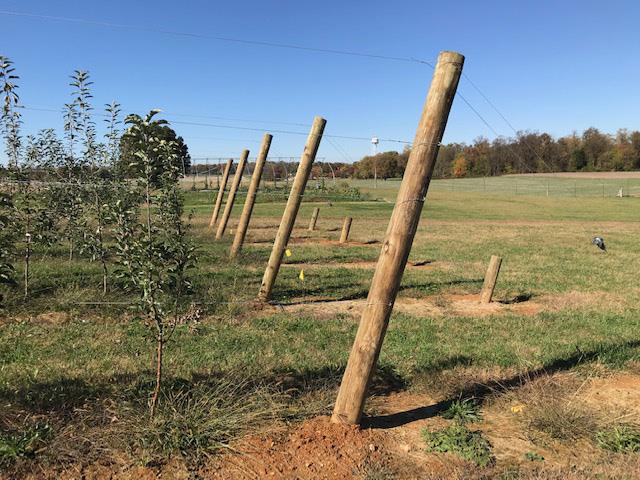
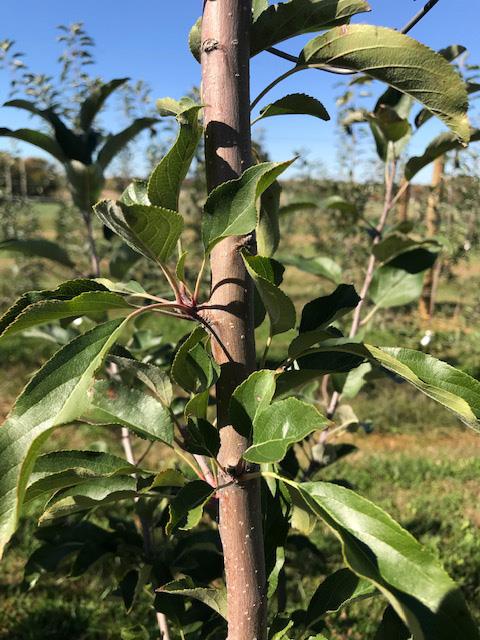
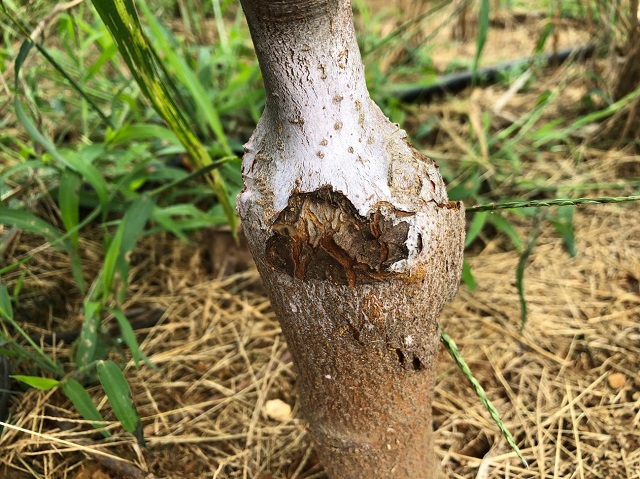
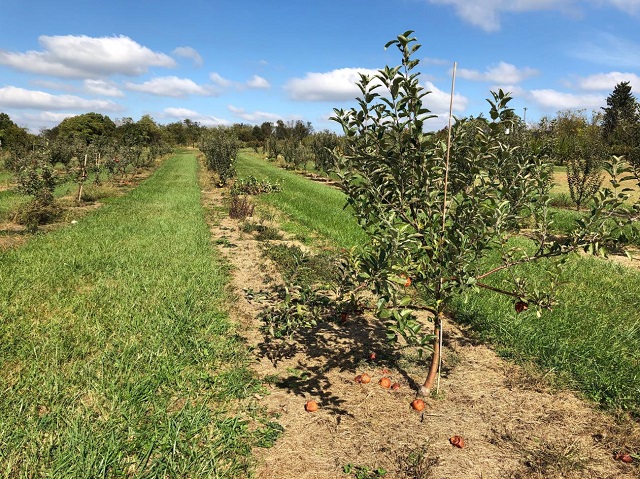
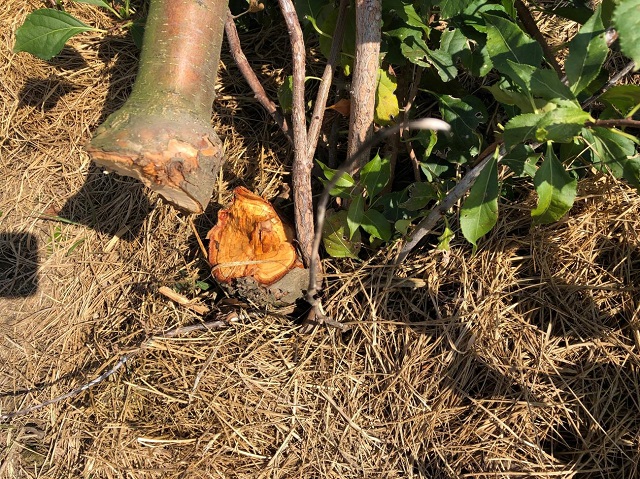
 English
English العربية
العربية Български
Български 简体中文
简体中文 繁體中文
繁體中文 Hrvatski
Hrvatski Čeština
Čeština Dansk
Dansk Nederlands
Nederlands Suomi
Suomi Français
Français Deutsch
Deutsch Ελληνικά
Ελληνικά हिन्दी
हिन्दी Italiano
Italiano 日本語
日本語 한국어
한국어 Norsk bokmål
Norsk bokmål Polski
Polski Português
Português Română
Română Русский
Русский Español
Español Svenska
Svenska Català
Català Filipino
Filipino עִבְרִית
עִבְרִית Bahasa Indonesia
Bahasa Indonesia Latviešu valoda
Latviešu valoda Lietuvių kalba
Lietuvių kalba Српски језик
Српски језик Slovenčina
Slovenčina Slovenščina
Slovenščina Українська
Українська Tiếng Việt
Tiếng Việt Shqip
Shqip Eesti
Eesti Galego
Galego Magyar
Magyar Maltese
Maltese ไทย
ไทย Türkçe
Türkçe فارسی
فارسی Afrikaans
Afrikaans Bahasa Melayu
Bahasa Melayu Kiswahili
Kiswahili Gaeilge
Gaeilge Cymraeg
Cymraeg Беларуская мова
Беларуская мова Íslenska
Íslenska Македонски јазик
Македонски јазик יידיש
יידיש Հայերեն
Հայերեն Azərbaycan dili
Azərbaycan dili Euskara
Euskara ქართული
ქართული Kreyol ayisyen
Kreyol ayisyen اردو
اردو বাংলা
বাংলা Bosanski
Bosanski Cebuano
Cebuano Esperanto
Esperanto ગુજરાતી
ગુજરાતી Harshen Hausa
Harshen Hausa Hmong
Hmong Igbo
Igbo Basa Jawa
Basa Jawa ಕನ್ನಡ
ಕನ್ನಡ ភាសាខ្មែរ
ភាសាខ្មែរ ພາສາລາວ
ພາສາລາວ Latin
Latin Te Reo Māori
Te Reo Māori मराठी
मराठी Монгол
Монгол नेपाली
नेपाली ਪੰਜਾਬੀ
ਪੰਜਾਬੀ Afsoomaali
Afsoomaali தமிழ்
தமிழ் తెలుగు
తెలుగు Yorùbá
Yorùbá Zulu
Zulu ဗမာစာ
ဗမာစာ Chichewa
Chichewa Қазақ тілі
Қазақ тілі Malagasy
Malagasy മലയാളം
മലയാളം සිංහල
සිංහල Sesotho
Sesotho Basa Sunda
Basa Sunda Тоҷикӣ
Тоҷикӣ O‘zbekcha
O‘zbekcha አማርኛ
አማርኛ Corsu
Corsu Ōlelo Hawaiʻi
Ōlelo Hawaiʻi كوردی
كوردی Кыргызча
Кыргызча Lëtzebuergesch
Lëtzebuergesch پښتو
پښتو Samoan
Samoan Gàidhlig
Gàidhlig Shona
Shona سنڌي
سنڌي Frysk
Frysk isiXhosa
isiXhosa